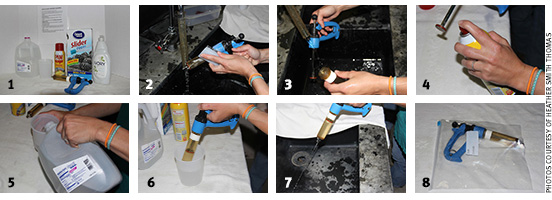
Tips for Cleaning Syringes
Syringes used for vaccinating cattle or administering injectable drugs such as antibiotics should always be clean before filling them. If a person makes a habit of thoroughly cleaning them after each use and storing them in a clean, dry place, they will be ready to go for next time.
Veterinarian Nora Schrag, assistant clinical professor of field service for the Kansas State University (K-State) College of Veterinary Medicine, says the repeat-dosing syringes (multi-dose syringe guns) are a little bit difficult to clean, but they always need to be cleaned.
“A good rule of thumb is to clean them with regular soap and hot water on the outside and on the inside. If you’ve used a vaccine that’s very thick, take the syringe apart completely and clean it with soap and water, and then rinse thoroughly with clean water,” says Schrag.
“You should use distilled water to rinse with, so it won’t leave any deposits or residue from the water. Many people have hard water (with minerals in it) and modified-live virus (MLV) vaccines are very sensitive to mineral deposits and disinfectants. The minerals in hard water will mix with the components of the vaccine sometimes and cause some problems. You also don’t want to clean a syringe with disinfectant and then use it for a MLV vaccine, or the vaccine will be deactivated,” she says. You just need the syringe to be clean. You can use soap and water, and then rinse it with distilled water.
“The final step is to boil some distilled water or heat it in a microwave for 2 minutes to get it boiling. Put the recently cleaned syringe back together. Then suck up the boiling water and blow it out the end of the syringe three times. After you’ve done that, the syringe is not perfectly sterile (not like it would be in an autoclave), but it is very clean and safe to use to vaccinate cattle,” she explains.
“After the syringes are thoroughly rinsed with boiling water, we put them in Ziploc® bags to store in a cabinet so they won’t get dusty. Don’t tighten the Ziploc or it will seal dampness inside. Leave it open enough to dry out. After a day or so, when it’s all dry, seal it up. Then we can put that syringe in our treatment box or wherever we will be using it next or storing it until the next use. Then when we pull it out, it’s clean and ready to go,” she says.

Editor’s Note: Heather Smith Thomas is a freelance writer and cattlewoman from Salmon, Idaho.





